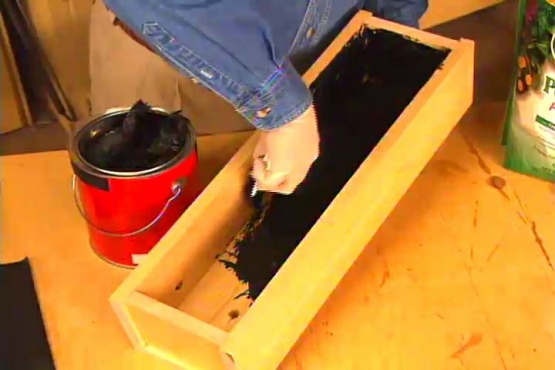RON HAZELTON:
I’m up early today to pick up some potting soil. As soon as I get home, I’ll be giving some of my flowering plants more growing room.
I really love my container plants. But they do have special needs that have to be considered, especially when you're planting them. Now what I've discovered is that the main difference between a plant that's set into a container like this and one that's put into the ground is the amount of soil surrounding the root system.
In a container, it's very limited. That means the plant can dry out very quickly. On the other hand if there's not proper drainage, you can actually drown a plant. So water control is really important. Now I always use a planter that has a good drainage hole in the bottom.
And I also want to make sure that that hole doesn't get plugged up or the soil doesn't wash through it. So that means some kind of drainage material in the bottom of the planter. I could use crushed rock but I kind of like this. These are Styrofoam peanuts. They won't ever rot and they're very lightweight. Which makes it easy to carry this around. Now I've learned through hard experience that not all soil is created equal.
And that it's really important especially in container plants to use a good quality potting soil. I'm going to further condition this potting soil by adding these polymer granules. In this case, about 5 teaspoons for this amount of soil.
Now these work like thousands of tiny small dry sponges. When the water hits, they absorb it like that. And then release it into the soil as it's needed. Pretty smart, huh? Now I'm just going to mix these into the soil.
[MUSIC]
So here's our plant. I want to get it out of the container, so usually I kind of have to push on this a little bit to loosen it up. I should be able to take it out now. There it goes. Now this plant is not - is in pretty good shape as far as it not being root bound. I have seen the roots as you probably have, wrap all the way around here.
In that case, we want to break them up a little bit so that the roots know that they have now got some more room in which to grow. I'll just drop it right in here. Settle it in. Just take a look, be sure we're down below the rim.
We are. Now I want to back fill that space between the edge of the rootball here and the side of the pot. And gently pack this in. Not too tightly. Well the soil's in. Now I've just got two final steps. One is, I want to give this plant some water to sort of settle the soil in.
And I want to feed it to stimulate the root growth. And for that, I'll use this kind of fertilizer right here which is designed for transplants. Dilute that into some water. And then pour this on. And as the water hits that soil, it's going to level it out and settle it down.
And the plant food is going to stimulate those roots to grow. Now I want to repeat this process in about a week. And then about a week after that, I'll start regular feedings.
Container plants on decks and patios can dry out quickly, especially during hot weather. That's why I check them daily and water often. But I figure, that's a small price to pay for the pleasure they give me.







